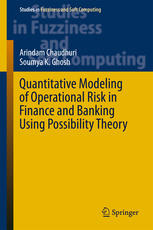

Most ebook files are in PDF format, so you can easily read them using various software such as Foxit Reader or directly on the Google Chrome browser.
Some ebook files are released by publishers in other formats such as .awz, .mobi, .epub, .fb2, etc. You may need to install specific software to read these formats on mobile/PC, such as Calibre.
Please read the tutorial at this link: https://ebookbell.com/faq
We offer FREE conversion to the popular formats you request; however, this may take some time. Therefore, right after payment, please email us, and we will try to provide the service as quickly as possible.
For some exceptional file formats or broken links (if any), please refrain from opening any disputes. Instead, email us first, and we will try to assist within a maximum of 6 hours.
EbookBell Team

4.0
86 reviewsThis book offers a comprehensive guide to the modelling of operational risk using possibility theory. It provides a set of methods for measuring operational risks under a certain degree of vagueness and impreciseness, as encountered in real-life data. It shows how possibility theory and indeterminate uncertainty-encompassing degrees of belief can be applied in analysing the risk function, and describes the parametric g-and-h distribution associated with extreme value theory as an interesting candidate in this regard. The book offers a complete assessment of fuzzy methods for determining both value at risk (VaR) and subjective value at risk (SVaR), together with a stability estimation of VaR and SVaR. Based on the simulation studies and case studies reported on here, the possibilistic quantification of risk performs consistently better than the probabilistic model. Risk is evaluated by integrating two fuzzy techniques: the fuzzy analytic hierarchy process and the fuzzy extension of techniques for order preference by similarity to the ideal solution. Because of its specialized content, it is primarily intended for postgraduates and researchers with a basic knowledge of algebra and calculus, and can be used as reference guide for research-level courses on fuzzy sets, possibility theory and mathematical finance. The book also offers a useful source of information for banking and finance professionals investigating different risk-related aspects.